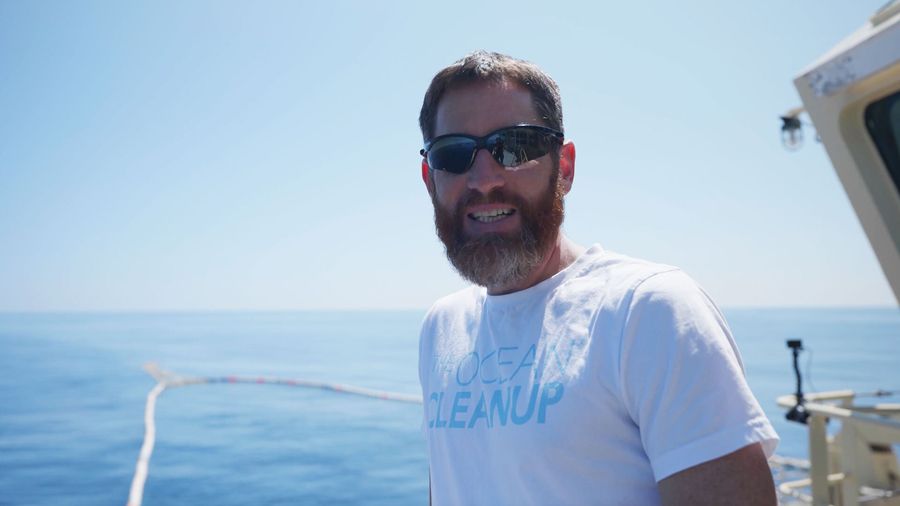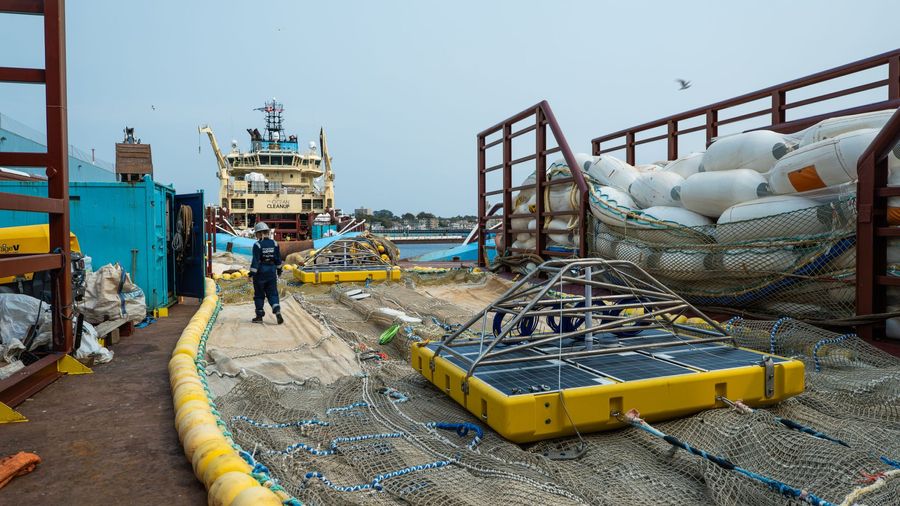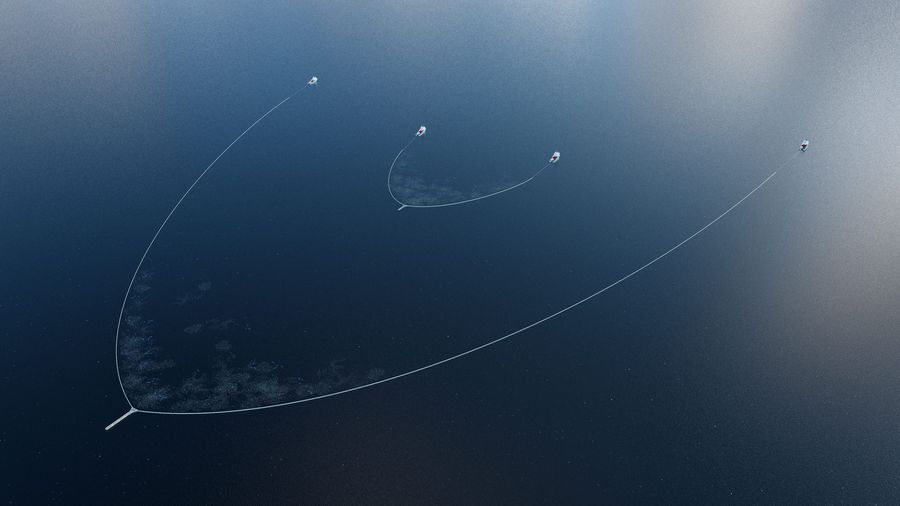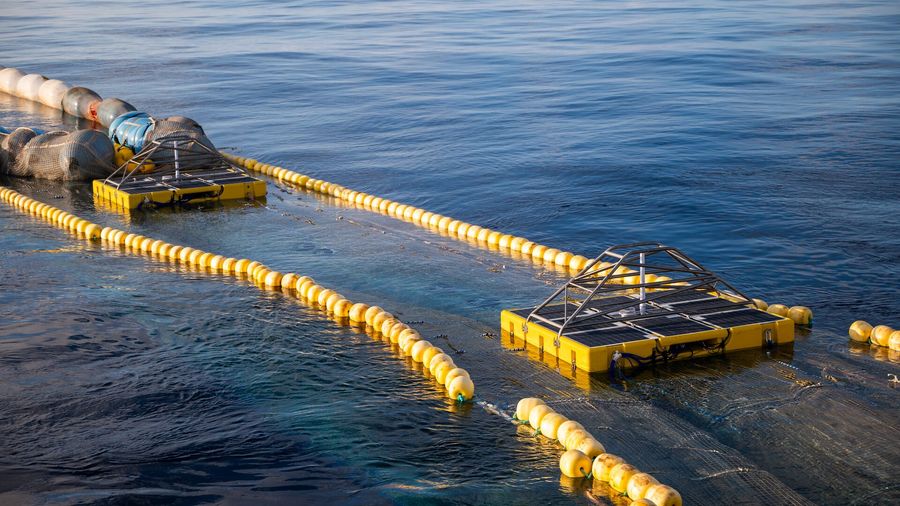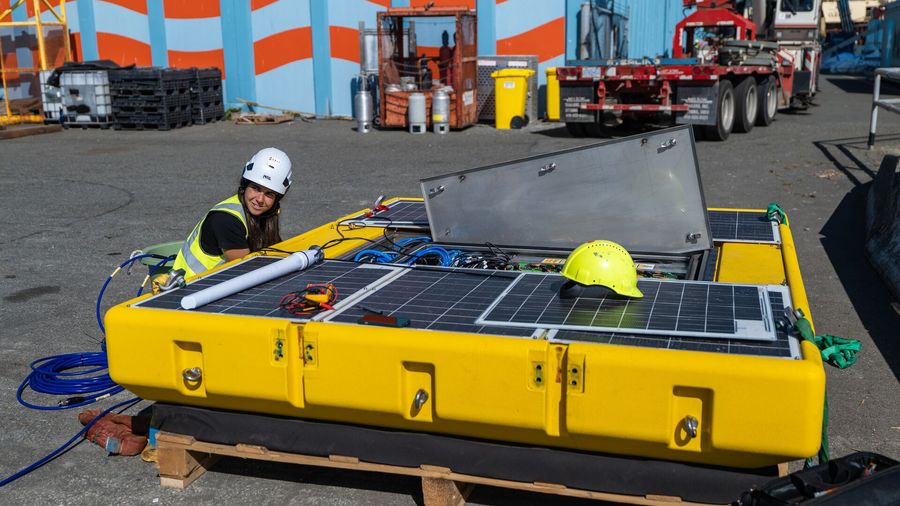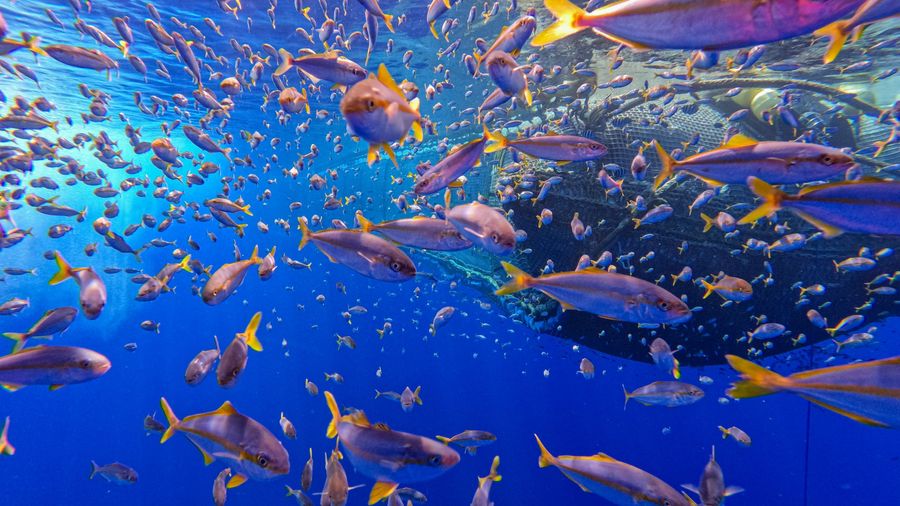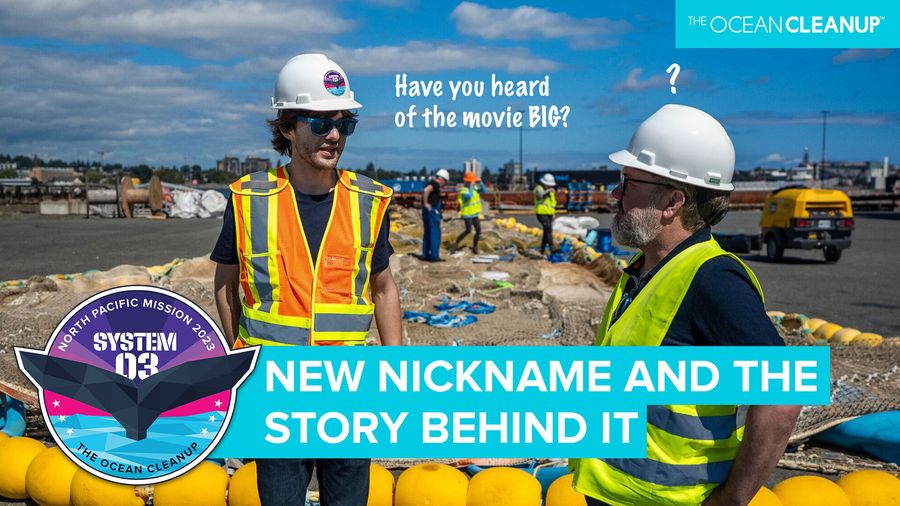
System 03: A Beginner’s Guide
Back to updatesThis week, we deployed System 03 in the Great Pacific Garbage Patch for the first time. Nearly three times larger than our previous technology and capable of cleaning the area of a football field every five seconds, the arrival of System 03 marks a huge leap forward in our mission of ridding the oceans of plastic. We explain how System 03 works in ten questions.
What is System 03?
System 03 is a cleaning system which removes plastic from the ocean, designed, deployed and operated by The Ocean Cleanup. The system consists of a floating barrier approximately 2.2 km (1.4 miles) long, which is towed between two slow-moving vessels. This barrier suspends a screen extending 4 meters (13 feet) below the surface of the water, where most floating plastic is encountered.
System 03 is The Ocean Cleanup’s third iteration of cleaning technology and was deployed to the Great Pacific Garbage Patch (GPGP) in August 2023 following testing with System 001 and the success of System 002, which extracted over 250,000 kg (620,000 lbs) of plastic from the GPGP between 2021 and 2023.
How does System 03 remove plastic from the ocean?
First, our crew has to get to the GPGP: a five-day journey to the middle of the North Pacific. System 03 is transported to the GPGP by two vessels – the Maersk Tender and the Maersk Trader – until we reach our destination and the system is deployed for operation.
Once the system is ready, the vessels tow System 03 at a slow speed comparable to walking pace, using monitoring data and AI modeling to steer towards areas of highest density plastic, allowing the system to collect plastic as it moves through the GPGP.
Floating plastic pieces are guided by the wings towards the system’s Retention Zone – a huge sack which holds the plastic in place. Once the Retention Zone is ready to be emptied, it is pulled onto one of the vessels and the plastic is emptied out on deck for sorting and packing. We put the Retention Zone back in the water, and the process begins again.
To see an example of the extraction process, watch this video from the last extraction of System 002.
This week we had our largest ever extraction from the Great Pacific Garbage Patch: 11,353 kg of plastic out of the ocean for good.
As we transition to System 03, we see that increasing system size leads to bigger catches. pic.twitter.com/5UcrpATHbi— The Ocean Cleanup (@TheOceanCleanup) August 11, 2023
What happens to all the plastic?
Ocean plastic comes from a variety of sources, from abandoned, lost and discarded fishing gear to consumer waste emitted from rivers. Once we remove it, we aim to ensure this plastic never again re-enters the marine environment by recycling it into sustainable new products, providing a full-circle solution to ocean plastic pollution. For example, we teamed up with Kia to incorporate our GPGP plastic into their new electric vehicles, with the first batch delivered to Kia on System 002’s final return to port.
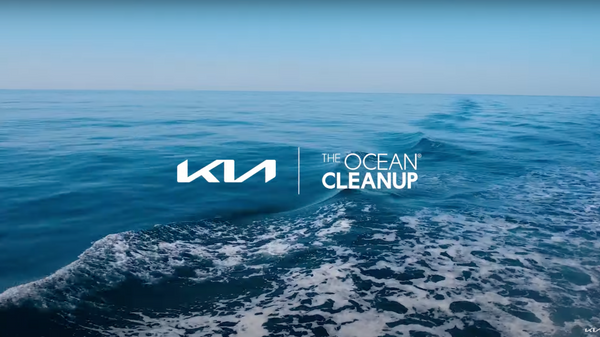
To prove we could turn this trash into treasure, we used our first ocean catch to produce The Ocean Cleanup Sunglasses – made from plastic extracted directly from the GPGP with System 001/B in 2019. These sold out within 18 months and helped fund the cleanup of an area equivalent to over 500,000 football fields. We’re now looking to invite additional partners to be a part of our mission by using our plastic in their products, helping ensure this plastic is kept out of the oceans permanently.
How big is System 03?
System 03 is big – really big. The wing length will vary according to operations and testing, but currently reaches a maximum length of around 2.2 km (over 7000 feet), nearly three times larger than System 002, with the ability at peak efficiency to clean an area the size of a football field every five seconds. The GPGP is enormous (around three times the size of France, or twice Texas) and cleaning the entire area requires a fleet of cleanup systems similar in scale to System 03. This is our first opportunity to deploy, test and optimize such a system, and we believe System 03 will develop into our blueprint for scale-up to a fleet capable of cleaning the entire GPGP.
Why is System 03 so much bigger than System 002?
Size matters because cleaning the ocean becomes cheaper and more efficient with bigger systems. By making System 03 so much bigger than our previous efforts (alongside the multiple upgrades we’ve implemented) we can cover a much larger area of ocean in less time and using fewer resources – driving down our cost per kilogram of plastic removed and maximizing our benefit on the marine environment. System 002 proved our technology and demonstrated that cleaning the GPGP is feasible; System 03 aims to prove that it is also economically viable. Scaling up to this size is an essential step towards meeting that objective.
What else is new for System 03?
System 03 is the result of years of testing and experimentation, and we have used these learnings to upgrade components to make our cleanup more efficient and economical.
The screen now extends deeper under the surface to catch plastic flowing underneath, while we have upgraded the barriers to tackle the issue of overtopping. We are continually improving our modeling and research abilities, meaning we can target areas of high-density plastic to increase our impact. We are also applying the learnings we’ve taken from System 002 relating to weather conditions, which will help us plan efficiently for the harsh North Pacific winter when we pause our activities.
We have drastically increased our monitoring capabilities, growing our camera array and applying AI to allow us to process huge amounts of previously unstudied data. As our plastic catch continues to increase, we’re exploring new ways to compress and store our catch on deck – allowing us to bring back more plastic per trip and reducing our total transit.
With these additions and the replaced or upgraded components throughout to increase our uptime and reliability, System 03 is not just bigger: it’s better.
How do you make sure System 03 is safe for marine life?
Protecting the marine environment is at the center of our mission and we take every possible precaution to ensure our activities have the maximum net impact on life in the GPGP. System 002 performed well in this regard, with over 99% of its catch by weight consisting solely of plastic (see our April 2023 update).
The main new addition to System 03’s mitigation measures is what we call the MASH: the Marine Animal Safety Hatch. This is located inside the Retention Zone, which is monitored by underwater cameras. If an animal is spotted in the Retention Zone, the MASH is activated, blocking off any further entrance into the Retention Zone while opening an exit hatch and giving the animal a clear route out. This mechanism also means we can ensure any animals exit the Retention Zone without costing us a full load of plastic, further improving our efficiency.
Combined with the new camera skiff and expansion from 4 to 10 cameras (with testing planned for more), our ongoing research into the various communities inhabiting this area, and the deterrents and operational procedures being trialed as System 03 is deployed, we believe we can maintain our strong environmental performance and minimize any negative influence on this environment and ensure our scale-up is safe for GPGP wildlife.
What will happen to System 002?
System 002 hasn’t gone away: it’s evolved into System 03.
System 002 was extremely successful in the GPGP, extracting hundreds of thousands of kilograms of plastic, and was transformed into System 03 during a gradual transition (see our July 2022 video) whereby elements of System 002 were replaced, upgraded and tested in the field. This transition led to the expansion of the wings to the full length with deeper reaching screens, and the final component upgrades in August 2023. At that point, System 03 was complete and ready for deployment.
Goodbye System 002, hello System 03. Deployment starts today. pic.twitter.com/Rc82VDK5T3
— The Ocean Cleanup (@TheOceanCleanup) August 28, 2023
What about the future? Can System 03 clean the entire GPGP?
We intend to continue trialing and optimizing System 03 during its deployment – just as we did with previous iterations, and those learnings will continue to influence us. But System 03 can’t clean the GPGP alone – a cleanup this gigantic needs a fleet (we calculate that around a dozen systems would do it). We believe System 03 can make a significant impact on plastic pollution in the Pacific, while becoming the blueprint for the fleet we need to finish the job.
Ocean plastic pollution is a complex and global problem with many sources, causes and potential solutions. We aim to solve this problem with a dual strategy: intercepting plastic in rivers around the world to stop the inflow, while tackling the largest accumulations of plastic in the oceans. We’re starting with the biggest – the GPGP – but we’re already looking at how our systems can tackle the other garbage patches around the world.
Finally – what about a nickname? We’ve had Wilson, and then Jenny – what do we call System 03?
System 03 certainly does have a nickname, and we’re grateful for the thousands of suggestions – take a look at Boyan’s big reveal here…
System 03 is the latest milestone in the 10-year journey of The Ocean Cleanup and our mission to rid the oceans of plastic. Follow theoceancleanup.com and @theoceancleanup to see the progress of System 03 in the Great Pacific Garbage Patch.
Clean the oceans with us
Help rid the oceans of plastic with us, and work towards a cleaner future.


